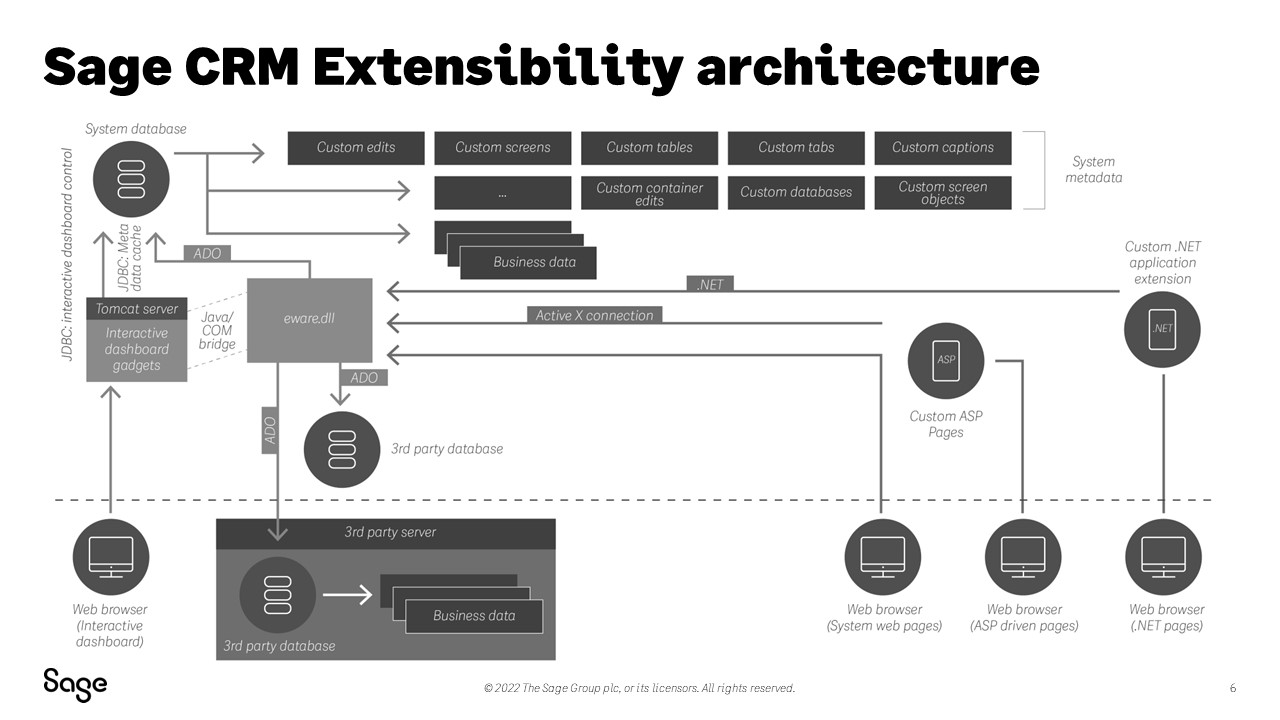
If we consider a screen like the Case Summary screen we can imagine it being built in a series of layers.
If we consider the hyperlink
http://localhost/CRM/eware.dll/Do?SID=198369875659391 &Act=281 &Mode=1 &CLk=T &Key0=8 &Key1=43 &Key2=57 &Key8=46 &T=Case
We can see that the Action code 281 has been used. This is received in the eWare.dll and understood to mean the generation of the Case Summary screen.
The Case Summary screen is complex because it is a workflowed screen. Cases, Opportunities, Leads and Solutions all work in a similar way and demonstrate similar complexity in all aspects. (See the article "Using a TableLevel script to Update Submitted Values")
The Cases entity like its 3 brothers has a Progress table that shadows it (CaseProgress). The Case Summary screen is therefore built by reference to records drawn from two tables.
The Role of Meta Data Tables
-
- custom_databases is the meta data that defines the link to external databases (a Sage BMS system like Sage 300cloud or Self Service)
- custom_tables describes the link to the tables in the database.
- custom_views holds the definitions of the views that are used for some screen access and all list/grid access
- custom_edits describes the fields and their properties
- custom_caption looks after the translations
- custom_screenobjects hold the toplevel definitions of the screens
- custom_screens holds the structure of the screens including the definition of the field level scripts

